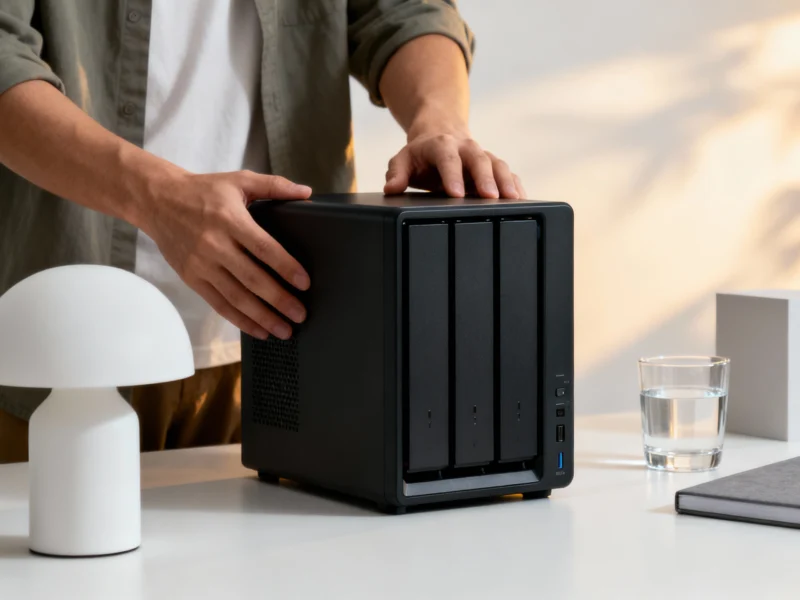Budget network-attached storage devices can deliver enterprise-level performance and protection with strategic configuration changes. Whether you’re running TrueNAS, Synology, or DIY builds, these eight optimizations transform basic storage into robust data management systems without expensive hardware upgrades.
Accelerate Network Transfers with SMB Multichannel
Modern NAS devices often include multiple network interfaces that remain underutilized without proper configuration. SMB multichannel technology enables simultaneous data transfer across multiple network paths, potentially doubling or tripling throughput for large file operations. According to Microsoft’s SMB protocol documentation, this feature automatically detects multiple available network paths between client and server.
Implementation varies by platform—Synology’s DSM offers straightforward enablement while TrueNAS requires careful subnet configuration. The technology works best when both NAS and client devices support multiple active connections, though single-NIC clients can still benefit from improved concurrent transfer capabilities. Real-world testing shows transfer speed improvements of 40-80% for large media files and virtual machine images when properly configured.
Implement Intelligent Caching and Data Protection
Strategic SSD caching transforms storage performance for specific workloads without requiring full SSD arrays. Metadata caching, available on Synology systems through SSD read-write cache configurations, dramatically accelerates file browsing and small file operations by keeping directory structures on faster media. TrueNAS users can deploy L2ARC caching for similar benefits, though RAM requirements should be carefully considered.
ZFS snapshots provide near-instantaneous data protection against ransomware, accidental deletion, and corruption. The OpenZFS project documentation recommends scheduling frequent snapshots—often hourly for active shares—with longer retention for less volatile data. When combined with ZFS compression using LZ4 or ZSTD algorithms, users gain both performance improvements and storage efficiency, as compressed data reduces I/O workload while maintaining high throughput.
Secure Remote Access Without Exposure Risks
Built-in remote access solutions like Synology QuickConnect simplify external connectivity but introduce potential security concerns by exposing services to the public internet. Security researchers at Carnegie Mellon’s CERT division recommend VPN-based alternatives for secure remote NAS access. WireGuard implementations through tools like wg-easy provide enterprise-grade encryption with minimal configuration overhead.
Zero-trust solutions like Tailscale and Netbird offer compelling alternatives, automatically handling NAT traversal while maintaining encrypted tunnels. These can be deployed in Docker containers on most NAS platforms, including budget-friendly units from Ugreen and QNAP. For users requiring web access, reverse proxy configurations with Cloudflare Tunnels provide secure external exposure without opening firewall ports directly to the NAS.
Proactive Maintenance for Long-Term Reliability
Regular storage health monitoring prevents catastrophic data loss, especially important when using consumer-grade drives in budget configurations. SMART attribute monitoring, standardized across the storage industry, enables early detection of developing drive issues. Backblaze’s extensive drive reliability research demonstrates that proactive SMART monitoring identifies 70% of drive failures before complete failure occurs.
ZFS and Btrfs scrubbing actively validates data integrity, repairing silent corruption when redundancy exists. The ZFS Administration Guide recommends monthly scrubbing schedules for home users, with more frequent intervals for mission-critical data. Combined with scheduled SMART tests—weekly short tests and monthly extended examinations—these practices maintain storage health and provide early warning of component degradation.
Power Protection and Noise Optimization
Uninterruptible power supply integration represents one of the most cost-effective reliability improvements for any NAS deployment. According to APC’s power protection guidelines, even brief power interruptions can cause file system corruption and hardware damage. Network UPS Tools (NUT) provides cross-platform compatibility, enabling automatic graceful shutdown during extended outages.
Cooling system upgrades address common budget NAS shortcomings while extending component lifespan. Noctua’s thermal testing demonstrates that maintaining HDD temperatures below 45°C can increase lifespan by up to 40% compared to drives operating at 55°C or higher. Aftermarket fan replacements optimized for static pressure improve airflow through dense drive arrays while reducing acoustic output, creating a more pleasant operating environment.
Advanced Network Optimization Techniques
Jumbo frame configuration can significantly improve large file transfer performance when properly implemented across network infrastructure. Increasing MTU from the standard 1500 bytes to 9000 reduces protocol overhead by up to 40% according to Intel’s networking performance studies. This optimization requires consistent configuration across switches, NAS interfaces, and client devices to avoid packet fragmentation issues.
Implementation success depends on network homogeneity—enterprise networking equipment typically supports jumbo frames while some consumer routers may not. The technology particularly benefits CPU-constrained budget systems by reducing processing overhead per transferred byte. For networks handling frequent large backups or media streaming, proper jumbo frame configuration can yield 10-15% throughput improvements even on gigabit connections.



